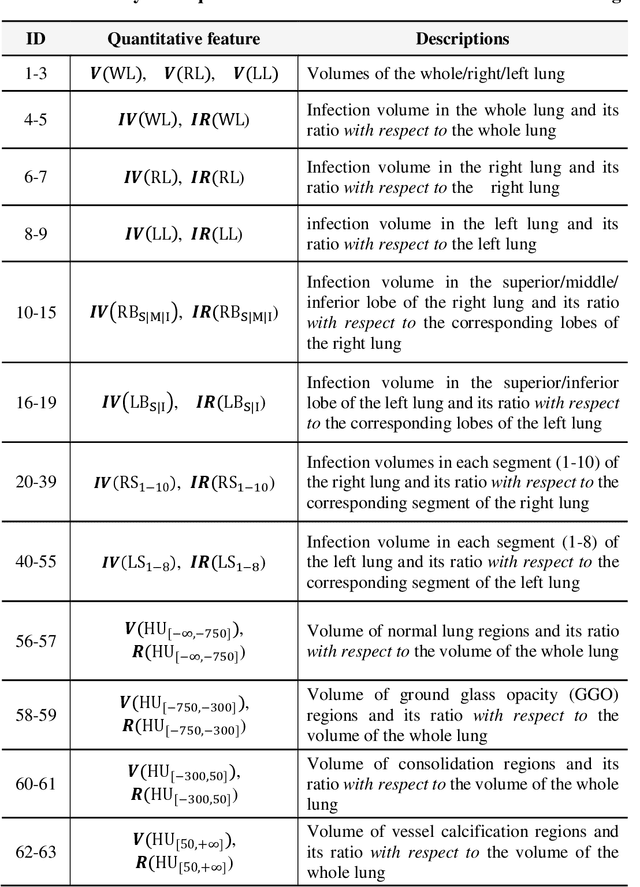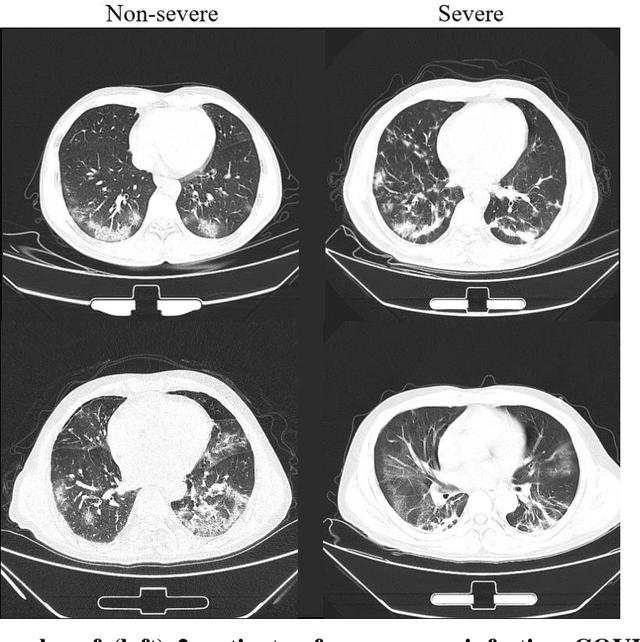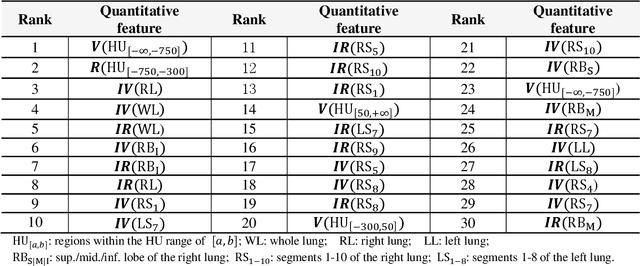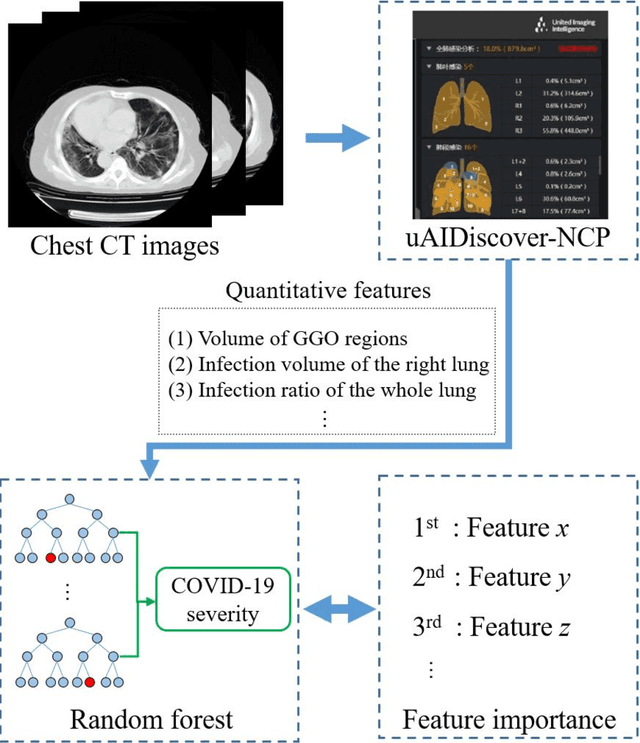Severity Assessment of Coronavirus Disease 2019 (COVID-19) Using Quantitative Features from Chest CT Images
Paper and Code
Mar 26, 2020



Background: Chest computed tomography (CT) is recognized as an important tool for COVID-19 severity assessment. As the number of affected patients increase rapidly, manual severity assessment becomes a labor-intensive task, and may lead to delayed treatment. Purpose: Using machine learning method to realize automatic severity assessment (non-severe or severe) of COVID-19 based on chest CT images, and to explore the severity-related features from the resulting assessment model. Materials and Method: Chest CT images of 176 patients (age 45.3$\pm$16.5 years, 96 male and 80 female) with confirmed COVID-19 are used, from which 63 quantitative features, e.g., the infection volume/ratio of the whole lung and the volume of ground-glass opacity (GGO) regions, are calculated. A random forest (RF) model is trained to assess the severity (non-severe or severe) based on quantitative features. Importance of each quantitative feature, which reflects the correlation to the severity of COVID-19, is calculated from the RF model. Results: Using three-fold cross validation, the RF model shows promising results, i.e., 0.933 of true positive rate, 0.745 of true negative rate, 0.875 of accuracy, and 0.91 of area under receiver operating characteristic curve (AUC). The resulting importance of quantitative features shows that the volume and its ratio (with respect to the whole lung volume) of ground glass opacity (GGO) regions are highly related to the severity of COVID-19, and the quantitative features calculated from the right lung are more related to the severity assessment than those of the left lung. Conclusion: The RF based model can achieve automatic severity assessment (non-severe or severe) of COVID-19 infection, and the performance is promising. Several quantitative features, which have the potential to reflect the severity of COVID-19, were revealed.
 Add to Chrome
Add to Chrome Add to Firefox
Add to Firefox Add to Edge
Add to Edge